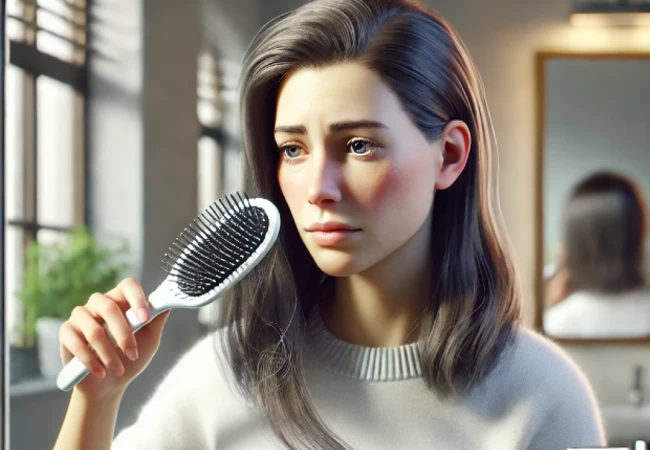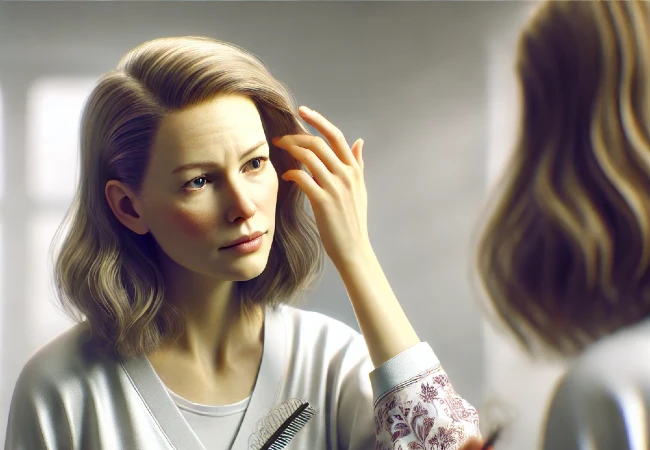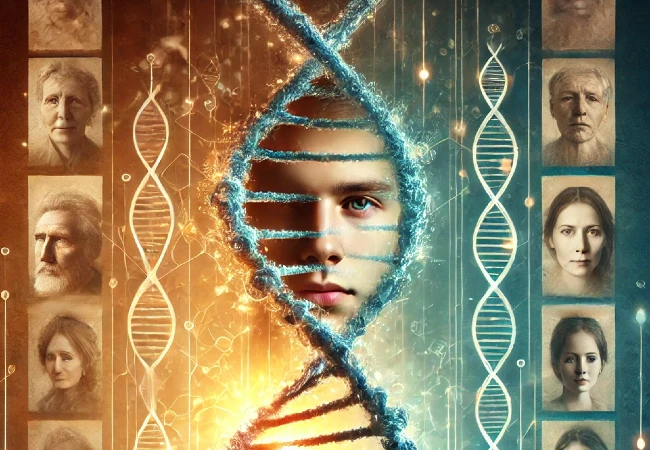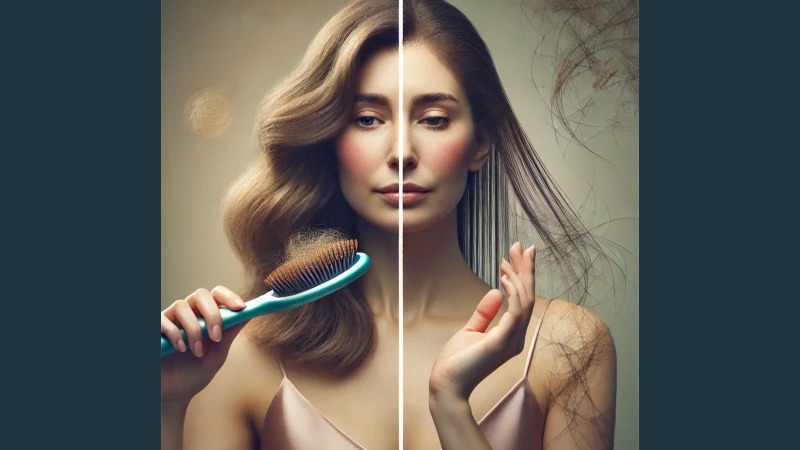Hair Shedding VS Hair Loss
Understanding the nuances of hair health is essential for maintaining a full and healthy mane. Two terms often used interchangeably, hair shedding and hair loss, actually describe different phenomena. Differentiating between the two can help you determine the best approach to managing your hair health. This article will delve into the specifics of hair shedding vs. hair loss, providing you with insights and tips to ensure your hair remains strong and vibrant.

Castor Oil Shampoo and Conditioner
An Anti Hair Loss Set Thickening Formula For Hair Regrowth, Anti Thinning Sulfate Free For Men & Women
Importance of Understanding Hair Health
Hair health is not just about appearance; it’s also a reflection of overall well-being. Hair can provide early indicators of nutritional deficiencies, hormonal imbalances, and other health issues. By understanding the differences between hair shedding and hair loss, you can take proactive steps to address any underlying problems and maintain healthy hair.
Overview of Hair Shedding and Hair Loss
Hair shedding and hair loss are common concerns for many people, but they are not the same. Hair shedding is a natural part of the hair growth cycle, while hair loss often indicates an underlying problem. Knowing the difference can help you identify whether what you’re experiencing is a normal process or something that requires medical attention.
What is Hair Shedding?

Natural Hair Growth Cycle
Hair grows in cycles that include growth (anagen), rest (telogen), and shedding (exogen) phases. It’s normal for hair to shed at the end of its growth cycle. On average, individuals shed 50 to 100 hairs daily, which is a part of the natural renewal process of the hair.
Daily Hair Shedding
Daily hair shedding is typically not a cause for concern. This shedding can occur during activities like brushing or washing your hair. Since new hair continues to grow from the same follicles, the overall hair density remains unchanged.
Factors Influencing Hair Shedding
Several factors can influence the amount of hair you shed, including seasonal changes, stress levels, hormonal fluctuations, and diet. Understanding these factors can help you manage normal hair shedding and distinguish it from pathological hair loss.
What is Hair Loss?

Definition and Causes
Hair loss, or alopecia, occurs when hair falls out and new hair doesn’t grow back. It can be temporary or permanent and may affect the scalp or the entire body. Hair loss can result from genetic predisposition, medical conditions, medications, or environmental factors.
Types of Hair Loss
There are various types of hair loss, including:
- Androgenetic Alopecia: Commonly known as male or female pattern baldness.
- Alopecia Areata: An autoimmune disorder that causes patchy hair loss.
- Telogen Effluvium: Temporary hair thinning due to stress or illness.
- Traction Alopecia: Hair loss caused by hairstyles that pull on the scalp.
Identifying Hair Loss vs. Shedding
Hair loss is usually more noticeable than shedding. If you see significant thinning or bald patches, or if you lose more than the typical 50 to 100 hairs a day over an extended period, you might be experiencing hair loss rather than normal shedding.
Differences Between Hair Shedding and Hair Loss
Duration and Severity
Hair shedding is temporary and part of the natural cycle, whereas hair loss can be prolonged and more severe. Hair loss often requires intervention to stop or reverse the process.
Patterns of Hair Loss
Hair shedding occurs evenly across the scalp, while hair loss often presents in specific patterns, such as receding hairlines or bald spots, depending on the underlying cause.
Impact on Hair Density
With normal hair shedding, hair density typically remains consistent because new hair grows in as old hair falls out. Hair loss, however, can lead to noticeable thinning or bald patches, affecting the overall density and volume of your hair.
Causes of Hair Shedding

Seasonal Changes
Many people experience increased hair shedding during certain seasons, particularly in late summer and fall. This is a natural response to changes in daylight and temperature and typically resolves on its own.
Stress and Anxiety
High stress levels can push a large number of hair follicles into the telogen (resting) phase, leading to increased shedding. Reducing stress through relaxation techniques and lifestyle changes can help manage this type of hair shedding.
Dietary Factors
A poor diet lacking essential nutrients like vitamins A, D, E, zinc, and iron can lead to increased hair shedding. Ensuring a balanced diet rich in these nutrients can support healthy hair growth.
Postpartum Hair Shedding
Many women experience significant hair shedding after childbirth, known as postpartum alopecia. This occurs due to hormonal changes and usually resolves within a few months.
Causes of Hair Loss

Genetic Factors
Genetics play a significant role in hair loss, particularly in conditions like androgenetic alopecia, which is hereditary and can affect both men and women.
Hormonal Imbalances
Conditions like polycystic ovary syndrome (PCOS), thyroid disorders, and menopause can cause hormonal imbalances that lead to hair loss. Managing these conditions can help reduce hair loss.
Medical Conditions
Certain medical conditions, such as autoimmune diseases (like alopecia areata), infections, and chronic illnesses, can cause hair loss. Treating the underlying condition is crucial for hair regrowth.
Medications and Treatments
Some medications, including chemotherapy drugs, blood thinners, and antidepressants, can lead to hair loss. Discussing alternatives with your healthcare provider may help mitigate this side effect.
Diagnosing Hair Shedding and Hair Loss
Consulting a Dermatologist
A dermatologist can help diagnose whether you’re experiencing hair shedding or hair loss. They will take a detailed medical history and examine your scalp to determine the underlying cause.
Hair Pull Test
During a hair pull test, a doctor gently pulls on a small section of hair to see how many strands come out. This test helps determine the stage of hair shedding and the severity of hair loss.
Scalp Examination
A close examination of the scalp can reveal signs of hair loss patterns, inflammation, or scarring, which can help diagnose the type of hair loss.
Blood Tests and Biopsy
Blood tests can identify nutritional deficiencies or hormonal imbalances that might be causing hair loss. In some cases, a scalp biopsy may be necessary to diagnose conditions like alopecia areata.
Treatment Options for Hair Shedding
Lifestyle Changes
Simple lifestyle changes, such as reducing stress, improving diet, and avoiding harsh hair treatments, can significantly reduce hair shedding.
Nutritional Supplements
Supplements containing biotin, zinc, iron, and vitamins A, D, and E can support hair health and reduce shedding. Always consult with a healthcare provider before starting any new supplement.
Recommendation: If you’re looking to enhance your hair growth, consider trying Liquid Biotin & Collagen – Vitamins for Hair Growth. This supplement combines biotin and collagen, both known for their benefits in promoting strong and healthy hair. It may support your hair growth process and improve overall hair quality. Check it out on Amazon: Liquid Biotin & Collagen – Vitamins for Hair Growth.

Liquid Biotin & Collagen – Vitamins for Hair Growth
Extra Strength 60000 mcg Drops – B7 Supplement – Strong Nails & Healthy Skin – 98% Faster Absorption Than Pills
Stress Management
Practicing stress management techniques such as yoga, meditation, and regular exercise can help reduce hair shedding related to stress.
Proper Hair Care Routine
Using gentle hair care products, avoiding excessive heat styling, and regularly trimming your hair can prevent unnecessary hair shedding.
Treatment Options for Hair Loss
Medical Treatments
Medications like minoxidil (Rogaine) and finasteride (Propecia) are commonly used to treat hair loss. These treatments can slow hair loss and promote regrowth.
Topical Solutions
Topical treatments, including over-the-counter minoxidil and prescription solutions, can be applied directly to the scalp to stimulate hair growth.
Surgical Options
For more severe cases, surgical options like hair transplants or scalp reduction surgery may be considered. These procedures can provide permanent solutions to hair loss.
Alternative Therapies
Alternative therapies, such as platelet-rich plasma (PRP) injections and laser therapy, have shown promise in treating hair loss by stimulating hair follicles and promoting growth.
Preventive Measures for Healthy Hair
Balanced Diet
Eating a balanced diet rich in proteins, vitamins, and minerals is essential for healthy hair. Foods like fish, nuts, seeds, and leafy greens can support hair growth.
Regular Exercise
Exercise improves blood circulation, which can benefit hair follicles and promote hair growth. Aim for at least 30 minutes of moderate exercise most days of the week.
Gentle Hair Care Practices
Use gentle shampoos and conditioners, avoid excessive heat styling, and be mindful of the products you use to prevent damage and maintain healthy hair.
Avoiding Harmful Hair Treatments
Avoid harsh chemical treatments like frequent coloring, perming, or relaxing, as these can weaken hair and lead to breakage and loss.
Common Myths about Hair Shedding and Hair Loss
Myth: Only Men Experience Hair Loss
Hair loss affects both men and women. While male pattern baldness is more common and noticeable, women can also experience significant hair thinning and loss.
Myth: Washing Hair Frequently Causes Hair Loss
Washing hair frequently does not cause hair loss. However, using harsh shampoos or excessively hot water can damage hair, leading to increased shedding.
Myth: Hair Loss is Always Permanent
Not all hair loss is permanent. Conditions like telogen effluvium are temporary, and with proper treatment, hair can grow back.
FAQs about Hair Shedding and Hair Loss
How much hair shedding is normal?
Shedding 50 to 100 hairs per day is considered normal. If you notice significantly more, it may be worth consulting a dermatologist.
Can stress cause hair loss?
Yes, high levels of stress can lead to conditions like telogen effluvium, causing temporary hair loss.
Are hair supplements effective?
Hair supplements can be effective if hair loss is due to nutritional deficiencies. However, they should be taken under the guidance of a healthcare provider.
What are the early signs of hair loss?
Early signs of hair loss include noticeable thinning, increased hair shedding, and the appearance of bald patches.
How can I differentiate between hair shedding and hair loss?
Hair shedding is a normal part of the hair cycle and involves losing a small number of hairs daily. Hair loss is more severe and may result in noticeable thinning or bald patches.
Can hair loss be reversed?
Hair loss can often be reversed or managed with proper treatment, depending on the underlying cause. Early intervention is key to effective treatment.
Conclusion
Understanding the difference between hair shedding and hair loss is crucial for maintaining healthy hair. While hair shedding is a natural part of the hair growth cycle, hair loss often indicates an underlying issue that requires attention. By recognizing the signs and taking proactive steps, you can address hair loss effectively and maintain strong, healthy hair. Remember to consult with healthcare professionals for personalized advice and treatment options.

